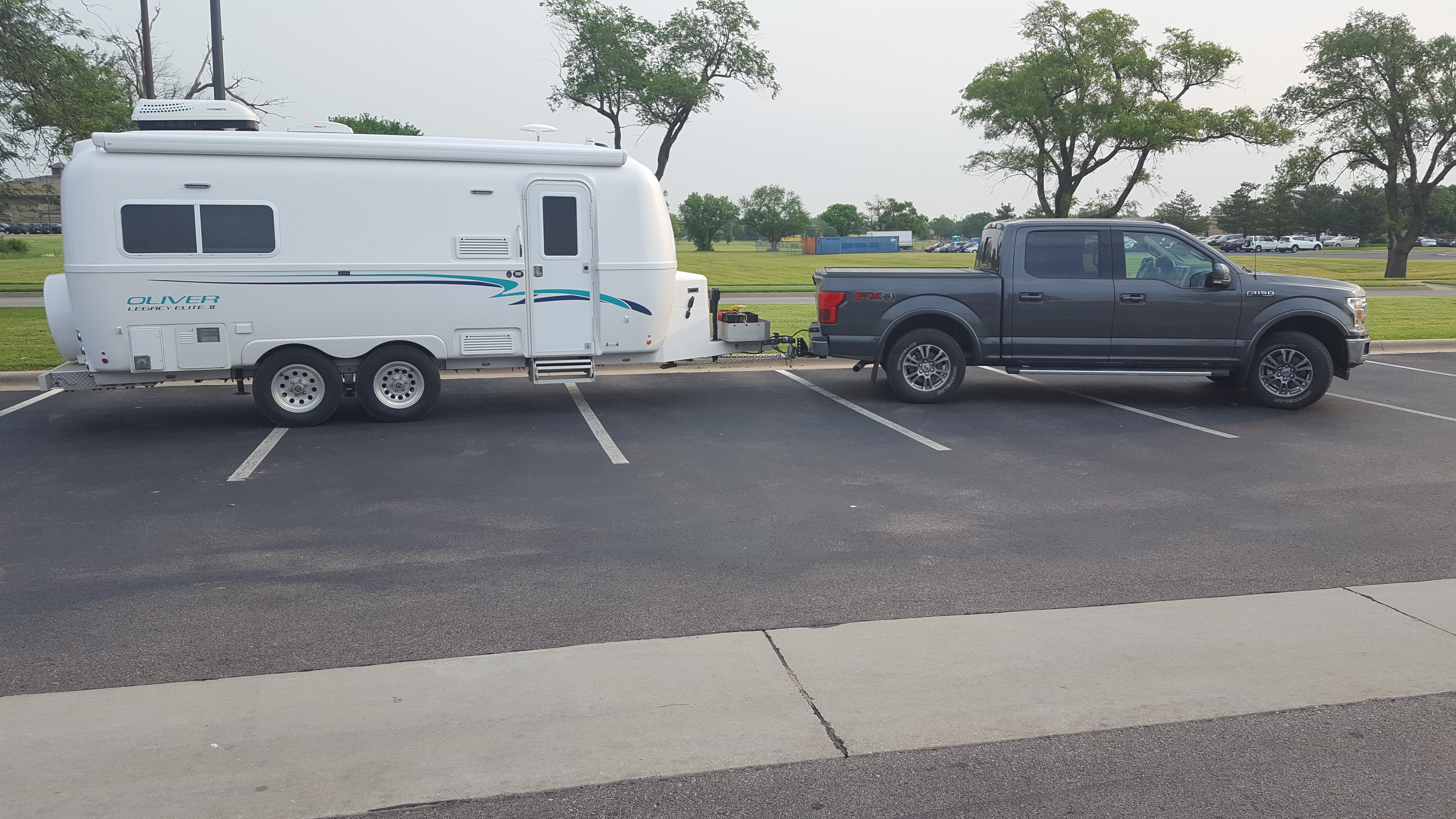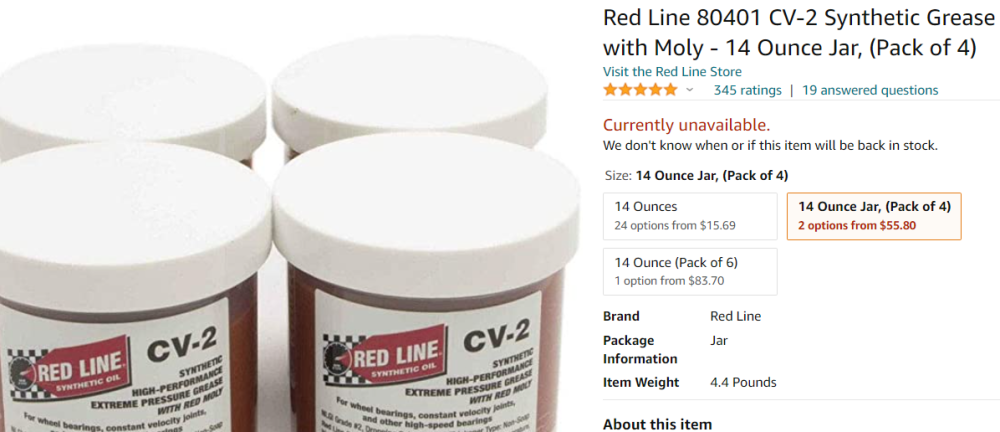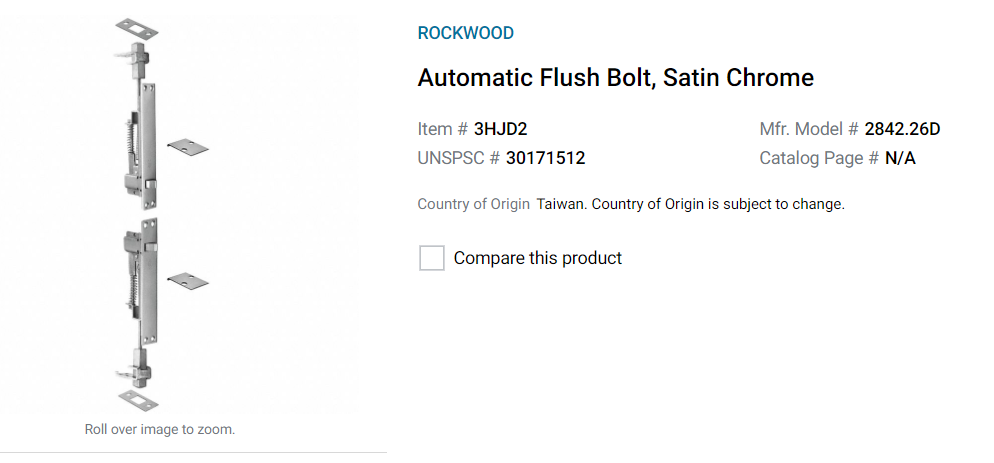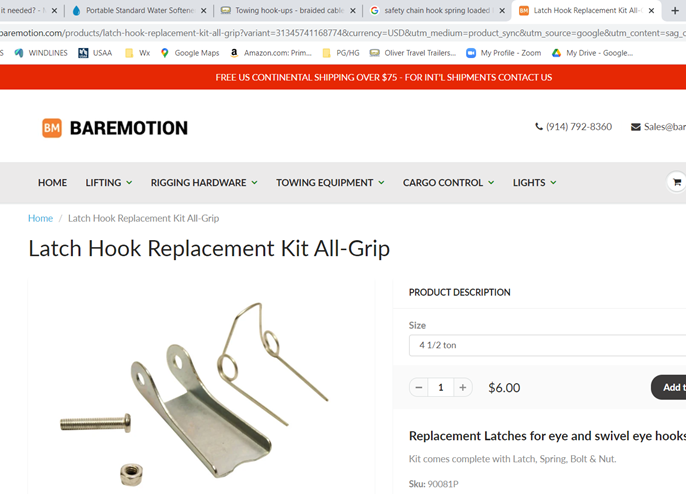-
Posts
2,012 -
Joined
-
Last visited
-
Days Won
53
Everything posted by Geronimo John
-

POLL: How many miles have you towed your Ollie(s)?
Geronimo John replied to John E Davies's topic in Towing an Oliver
21,560 Miles during four summers. I keep a log, but my F-150 does a much better job of keeping track of my Oliver miles. -
John: Very correct. The intent in my post above was directed only towards charging wire size between TV and Oliver. You bring up other equally important concepts that those wanting to use a newer TV's with smart Alternator to charge up their trailer batteries. Direct connecting TV to Trailer where you have L.A. to L.A. or AGM to AGM can be done as Raspy posted a couple of years ago (Battery to circuit breaker to Anderson Connection to Trailer batteries). The reason is that the two systems operate at the same voltage and have the same charge profiles. The voltage drop (I.E. a measure of cable resistance over its length) from the front battery to the back batteries will to some degree self limit the amount of power that could flow. This in turn provides a good measure of protection to the TV electrical systems. However mix a L.A./AGM TV to a Lithium Trailer batteries using direct connecting will really cause grief for several reasons: The internal resistance of the Lithium's is insignificant to that of the AGM or L.A. batteries. This would allow HUGH currents to flow from the TV to Ollie. If properly fused at both the TV battery terminals you would just be inconvenienced a lot. However, you are still at risk of damaging the TV charging/battery. Lithium batteries generally require a three program charge process that a direct connect does not provide. A smart TV alternator varies the output voltage to match the need. As a result, it will tend not to provide high enough voltage much of the time that the Lithium's need to get charged up. So to use your TV smart alternator to charge your lithium's, you need a current limiting device, that also acts as a "Buck Boost" transformer, and provides the computer smarts to provide the lithium's their three phase charge program. The unit you suggest appears to do all these tasks at 11 amps. A larger unit is the Victron Orion 12 -12 30. The "12 - 12 30" translates as: A 12+/- volt input providing a 12 to 14+ volt charge voltage to the lithiums, with up to 30 amps continuous (if needed), with current limiting and smart charging profiles. If you have a smaller battery bank, and drive many hours a day, a 11 amp charge system would work great and save you $$$. But we are now seeing Lithium battery banks commonly in the 200 to 300 Ah range. And some up to 630 Ah (such as Galway Gal's and the Oliver OEM Pro set up). For those, you likely would want the larger Victron Orion 12 - 12 30 charging system. Just a reminder these auto smart transformers are not 100% efficient. In the case of the Orion, it can continuously produce 30 amps at the correct voltages as needed, and is listed at 87% efficient. So that would mean your TV alternator/batteries could see up to a continuous 34.5 amp current draw. This means that there will be about 57 watts of power lost to the heat sink. So be careful where you locate this unit, and provide cooling holes/vertical space for the heat to dissipate (See JD's Posting On This Topic).
-
Owners; NOTE 15 OCT 202 updates are in BOLD. GJ Note that JD's 12-12 charger has an output of 11 amps. Those going to Lithium may want significantly more power. It appears that many of our owners are using or are looking at the Victron Orion 12-12 30 amp charger. Depending on your vehicle and Oliver cable run length and wire size. For my F-150 Crew Cab the length of wire needed for the upgrade was 108 feet actual (I had purchased 110) 4 AWG as suggested by BatteryCablesUSA. For the 4 AWG, you would need the Anderson 120 amp or 175 amp connector to handle the diameter of the cables. For running the two 4 AWG cables from the battery back to the firewall, across the firewall (To avoid both the Cat and the right side turbo), zigzagging back under the cab between the frame and body, and back to the hitch is an easy, but long run. Note: I chose to run two cables (Pos and Neg) and not rely on the vehicle chasis for grounding. I found Mike at BatteriesUSA to be exceptionally helpful. If you think you know your cable line measurement, I highly recommend you add another ten feet! Mike can give you the voltage drop for the various types of copper stranded cable. Specifically you can buy 4 awg welding cables or 4 awg power cables. Both are the same AWG. BUT they are not the same strand count. This can certainly impact which lugs you buy for the same 4 awg size. I chose stranded copper cable, not welding. Finally, for DC circuits you can go well above the normal 3% voltage loss. So if you are new to large DC cabling, measure twice, add an additional ten feet, and consider giving him a call at BatteriesUSA.
-
-
John Davies Wrote: " Use Redline CV2 and repack every 12K to 15K miles. There is NO need to repack more often if you keep an eye on bearing temperatures. .... Use high quality parts, and a high quality lubricant, no worries. .... You do need to recheck your hub bearing play after say 1000 miles, ,,,,,,,you may need to tighten one more slot on the adjuster nut. ." I have run 21,560 Ollie miles in the past four seasons. As a Professional Mechanical Engineer and amateur wrench turner, here is what I have found to work well ... I.E. zero issues on the road during the past four seasons with my 2018 OE2 bearings: I use Redline CV2. However Mobile 1 synthetic is likely just as good, and some may say better. All I know that after four cross USA trips in the last four years, the JD recommended CV2 works just fine for me. My Chinese Dexter bearings "bothered" me as it does many new owners. I over-serviced mine annually (new grease and seals). The Dexter bearings and National seals ran 16,000 miles with no issues. But this was my personal limit of comfort for them. When I changed them at the beginning of my fourth (May 2021) season , I had a full set of Timken bearings and two sets of National ready for use depending on what I found upon disassembly. I was rewarded in doing so as they were ready to be replaced. My recommendation is to keep track of your trailer miles, service the Dexter's annually or every 5,000 miles, and be ready to replace them with better bearings and seals based upon what you see. But have the Timken's and National's in hand by 10,000 miles for sure. Buy real Timken and National seals, a bearing punch, and extra CV2 or Mobile 1 synthetic grease. When you get in the 10 to 15K zone, replace the bearings with Timken's. You will travel confident knowing you will likely not have to do a bearing/seal job on the side of the road. SAVE the best two old bearings, clean them up well, grease them well, and put them into a plastic jar. Wrap them in Sarane Wrap if you like, but keep two just in case. Have your grease and gun with you at all times. Basically free insurance. I recommend that once you upgrade t the Temkin's and Seals, you can stretch out the service interval to 10,000 miles or so. Just always have four spare seals available. I recommend replacing the Timken's every 50,000 miles just for grins. Get a digital IR hand held temperature meter. Just easy to stop and zap the temperature of your hubs. Cheap insurance for bearings or brake issues. The ONE item that I have a recommendation that is contrary with John's is rechecking the bearing "play". I recommend stopping after just 100 miles and rechecking your bearing play. I found three of my four too loose after only 200 miles. Grease the EZ Flex zerks every 5,000 miles or annually! Guys, this is about the 4th time in four years that this subject has been asked and answered. Maybe if a moderator has some spare time this winter, all these threads can be consolidated and we can put this subject to bed.....at least until the next crop of owners joins our family. 🙂 For the new owners, here is a nice hand-out to have when you are working your wheel bearings. Geronimo John +++++++++++++++++++++++++++++++++++++++++++++++++++++++++++++++++++++++++++++++
-
My Ollie is a 2018 version with Duralast L.A. batteries. We are 50% boondocking and 50% shore power. We are on the road over 90 days a year. Our Duralast batteries have survived and performed well through 4 seasons. Over winter, they are stored in the battery bay in a barn on top of an Oklahoma mountain. Gets plenty cold there, but so far , the bad cold (Below 10 degrees for over a week) has not hurt them. Point is just disconnecting them from Ollie and keeping them on a 2 or 3 watt battery tender seems to have worked very well. If we were in a real cold area, I would consider a 10 watt light bulb set on a thermostat placed in the battery bay. Also, would for sure insulate the door as many of our owners have.
-

Battle Born 100 AH lithiums on sale $150 off
Geronimo John replied to John E Davies's topic in Ollie Modifications
For our country, I hope you are right. But the Lithionics folks sure like their jumbo (316 Ah) Lithium battery. The only place I actually saw a price had it listed at way over $4K. Tilt. I was primed to go the DYI build my own from components route, but the $150 price cut took me back to American Made Battleborns. -
Thank you.
-
JPS 190 "As a side topic has anyone replaced the generic lock on the battery tray with something a little more secure? Having thousands of dollars worth of batteries with a generic lock leaves me a little apprehensive." John: I was thinking the exact same thought. However, the latch itself would be an easy to defeat pry target. Somewhat tongue in cheek, a "Let's Over-Think This" off the wall idea, but maybe feasible if the Pantry is tall enough: OPTION 1: How about reinforcing the back of the latch side of the hatch, and adding horizontal tangs high and low (But for JD one in the middle too! 🙂.) pointing into the battery box. Drill a hole in each tang for a pin to drop through. Add holes in the ceiling and floor of the battery compartment. In the pantry, have a vertical pin with a cord attached to the top of the pin, and a long taper on the bottom of the pin. Pin would be well smaller diameter than the holes in the tangs. Put a pulley on the top of the pantry over the stack up of holes. Run the cord to the front of the pantry so that operation of the drop dead pin (Aka dead bolt) to be operated from inside. OPTION 2: Less complex would be to just install two of those cord operated automatic flush bolts. Reinforce the battery compartment with the provided latch plates. Add a pulley on the top of the bottom latch, run the top latch cord down to the pulley, then up and connect with the lower latch cord. Then extend a single cord up into the pantry. Once in the pantry, use another pulley to allow the cord to then run to the front of the pantry for easy access for opening the latches. For the professional "over thinkers", add a spring to the battery compartment so that the door will pop open when pulling the cord from the pantry. LOL. OPTION 3: Add an exploding dye charge to "highlight" the thief. Won't stop the batteries from being stolen, but it will at least bring a smile to your and the Police Officer faces when you describe what the thief looks like. Geronimo John
-

Water Softener - Is it needed?
Geronimo John replied to QuestionMark's topic in Mechanical & Technical Tips
Thanks for posting the one that has worked well over time. Some operational questions: Do you use the water softener only when using city water fill? Or have you plumbed it into the fresh water system. If so, where did you insert it? Can this unit be used on our "draft hose" for the boondock water upload port? Or does it have too much flow restriction to do so? Do you have yours hard-mounted, or simply in storage for water onboarding purposes? How do you winter proof it? Thanks again, -

Water Softener - Is it needed?
Geronimo John replied to QuestionMark's topic in Mechanical & Technical Tips
Mossey: You are absolutely correct. Correct term is Pump Head, not impeller. My error. Thanks for the correction. -
Earlier this summer mine acted up a couple of times. THANK YOU FOR THE ABOVE POSTS!I That said, four detectors are failing long before the seven year standard... why reward the MFG for their POS detectors by buying more? Does anyone have a suggestion for a longer life more reliable CO/Propane detector that will fit in the same space? Or one we can remove and toss into the trash can at 2:00 AM? Thanks JD: I LOVED "when you are trying to figure out how to kill power to that pesky alarm at 2:00 AM, with that bed occupied by a disgruntled spouse with her pillow held tight over her ears…." I would wager that more than a few of us have experienced your same "joy". LOL
-

Towing hook-ups - braided cables versus chains?
Geronimo John replied to Wayfinder's topic in Mechanical & Technical Tips
I find the cables a PITA to attach to my F-150 due to their tension and interference with the Anderson system. Frankly, I would swap the OEM Ollie curly cables for some DOT rated yellow chains in a flash. However the PITA they are, is not yet very high on the improvements list. But, before changing hooks, I would fix the latch hook. It's a lot less expensive. -

Water Softener - Is it needed?
Geronimo John replied to QuestionMark's topic in Mechanical & Technical Tips
My Ollie is primarily used out west. Over the previous 3 summer seasons, the water flow from the faucets had steadily decreased. I checked all fittings for air intake leakage (Pump Cavitation) and water loss, water pump screen, and even inspected the pump impeller pump head. The impact of using well and spring water was the obvious source of my self-inflicted water flow problem. When the boondock draw rate for a 5-gallon container time increased to over 7 minutes, I knew that I had waited a bit too long to effectively address the issue. So at the beginning of my 2021 Summer Tour, I purchased two large Costco jugs of Vinegar and executed the OTT recommended decalcification process. With some modifications, it worked very well. Basically, our faucets/showers water flow "grade" went from a "D-" to a "B+". For MY situation, my waiting three years to de-calcify was too long. As a short-term solution, I have added the de-calcification process to my required maintenance effort at the beginning of each odd year. Long term, a water softener is on the horizon. BTW, they are not cheap.... In the meantime, my future summer improvement priorities for my Ollie are: A. Lithium Conversion in 2022 (Thanks to Overland for the tip: "...I see that Battleborn have their standard 100Ah battery on sale for $799 right now, which is the best price I've seen since I bought mine in '17". I just purchased three of them. 🙂 B. Houghton Conversion in 2023 C. Water Softener in 2024 -
@ Bill: LoL "Back in the Day". Those single latch trays were used on my 2018 Ollie. Hopefully that ancient time, just 3 years ago, does not qualify for us to be "Ole Timers"!!!! On a previous post you are correct about "bolting" the single latch and using a nut and bolt. This topic was addressed a couple of years ago, way back in 2019 I think, and I commented that instead of using a nut, to use a RivNut so that we are not having to fish the nut after we drop it. For those not acoustomed to RivNuts (AKA: Rivet Nuts, Blind Flange Nuts, etc.), below is a sample. If you are not familiar as to how they are installed, send me a PM. Mahalo!
-

Charging Lithium Batteries
Geronimo John replied to John C Marsh Jr's topic in Mechanical & Technical Tips
I'll give them a call to see if the PD 9200 series will work with my PD 4000 series. Thanks. GJ -

Charging Lithium Batteries
Geronimo John replied to John C Marsh Jr's topic in Mechanical & Technical Tips
I can't look as I'm 4,000 miles from my Ollie, but one of the technical staff indicated that there is a jumper that can be removed from the Converter and dropped down a hole to switch the Converter from AGM/L.A. to Lithium. The black jumper has two pins that are in the top and middle slot. It is in the AGM and Lead Acid position. By pulling out the jumper, and putting it into the center and bottom hole, you have set the PD 4000 series Converter to the Lithium mode. Doing so will still put you about .2V short of the desired equalization voltage for many such batteries. If this is not what you are speaking of, I would SURE appreciate it if you could post a picture and maybe the ordering info for the Pendent. Thank you, -
I searched the University and Forum and did not find an answer. So am asking here as at least this topic in sort of on topic to this thread.... sort of. 🙂 What is size the inside dimensions of our OE2 battery tray, and what is the vertical clearance from tray to ceiling of the storage bay? I am laying out possible solar batteries and associated equipment and want to make sure they will fit. I thank you, Geronimo John MODERATORS: If there is a better place to post this, I would appreciate your moving this post as appropriate. Thanks.
-

Charging Lithium Batteries
Geronimo John replied to John C Marsh Jr's topic in Mechanical & Technical Tips
I was speaking to Larry at Lifeblue Lithium and he mentioned something about Progressive Dynamics having an inexpensive "Pendant" that allows us to manually increase the stock 2,000 Watt PD converter output to periodically increase the voltage for topping off lithium batteries. Does anyone have any insights as what this is and how it works? Thanks, -
Brad: I spend three months a year in our Ollie. We mostly boondock. Over the past four summers, we have averaged 5,400 miles a summer. Mostly out west in the mountains. We don't have AGM or Solar. I am not up-to-date on what the new Optional/Standard features are, so please forgive me on that. That said, from your above first post, here is what comes to my mind: For A/C, we run a Honda EU2000, as well to charge our Lead Acid (L.A.) batteries during afternoons. One trick I use is to meter the amount of fuel I put into the generator tank based upon how long I want it to run in the afternoons. Sort of a way not to overcharge should I not be in the area. You may want to explore if your Ford 7.2 KW generator has an auto shut off based upon the Status of Charge (SOC). That would be really cool. Pretty much all the OE2 loads can be covered by a 30 amp 120V feed. Your 7,200 watt Ford generator can theoretically put out about twice this amount of power. So with the truck, you should not require an additional generator. However, the fuel efficiency of a Honda EU2200i may be very beneficial should you do a LOT of boondocking. With your on-board Ford generator, and it's remote start, you can easily extend your SOC (State of Charge) for morning heavy 120V electrical loads and not have to leave your bunk to do so. Just be aware of the neighbors. Overall, our lead acid batteries work OK. I do stress them every morning with our coffee and microwave cooking, as well as at night with microwave cooking. They have lasted us over four years now, but I suspect that next summer I will want/need to replace. Most likely with lithium's. I suspect that you could save $$ by getting the standard L.A, and then waiting a few years for the Litho upgrade. You will FOR SURE want to have an Anderson Charge Plug option at the front of your trailer to make easy connection from your Ford rear power point. I would also get the 3,000 watt inverter if you can. The lead acid batteries will not make use of the extra 1,000 watt capability. But when you get the lithium's, you WILL be glad you had that upgrade. to allow A/C, microwave and coffee pot all at the same time! (GJ Update: All at one time may be a bit excessive. ) For sure get the EZ Start for the A/C. I don't recommend the mattress upgrade. My budget solution was to purchase via Amazon a Zinus 6 Inch Ultima Memory Foam Mattress. I got the larger one (Queen I think but double check this), and used a butcher knife to EASILY cut it long wise, and rounded the rear outside corners for a perfect fit on the twin beds. I place my Zinus below the Ollie standard mattress, and my wife does the opposite. Saves $$$ and works very well. But then bedding is something that is different for everybody. The extra height of both mattresses stacked does make the couch cushions a bit tall. I may try not using the factory mattresses this coming summer to mitigate this issue some. But then, the stack up sure works great for sleeping.... We chose to get one set of couch cushions. Why not two? Because one set will store at night nicely in the dinette area. Two sets much less so nicely. Just some thoughts from a RoF (Retired Ole Fart) :-).
-

It’s official! Just picked up Hull 888 today!
Geronimo John replied to Steve and Mary's topic in Introduce Yourself
Steve and Mary: Welcome to the Oliver Owners Family. As you know, we on the Oliver Forum love to help out the new owners in any way we can. If you don't find info via the search, just start a new thread and one of the experienced owners, if not several of them, will just about always in good faith try to help. I suspect that you are aware that the number 888 has special biblical significance. 888 is the angel number, and means renewal, infinite abundance, and new beginnings. How cool for you both. I wish you the very best, and that the angels be with you both in all your travels, especially with your beautiful OE@. -

Why an inside hot water heater switch?
Geronimo John replied to Wayfinder's topic in Mechanical & Technical Tips
Note: I don't have solar or big lithium power systems. On my departure check list I have a requirement to decide to leave the outside electric switch on or off. If my next stop has 30 amps, then by all means I leave the electric power on to the water heater. But if my next stop has only a 20 amp, or if I will be using my Honda EU200I, I turn the electric off to the hot water heater. My check list also has me turn the refrigerator to gas only. When I arrive at at a site that does not have 30 amp service, if my trailer is hot inside, my priority is to get the AC on ASAP. I check that: My battery charge is OK That the refrigerator is still on gas only I then turn off the Converter (On board battery charger) at the breaker. Doing so pretty much assures me that there will not be any significant electrical loads against the generator other than the A/C. It took me a while to figure out that the 45 amp converter is a silent power theft for when I want the AC on. 😞 The above has worked well for me.









